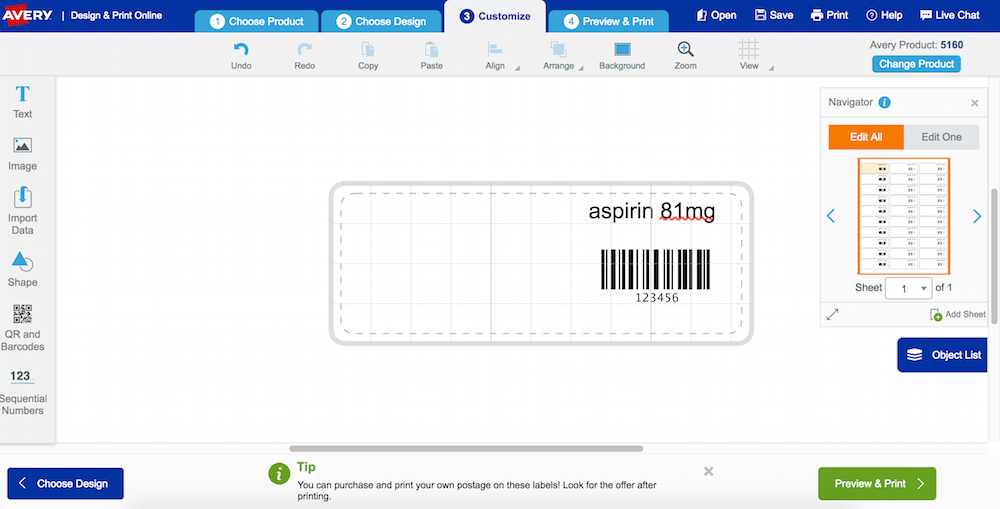Looking to create low cost bar-code systems for your healthcare simulation program? Good news! Avery labels offers a free barcode generating system on their website linked below. Medical simulation programs need to provide learners with the opportunity to locate, secure, open, draw, and dispense medications in a safe way. Below is a quick way you can create your own affordable bar codes for simulated medication administration training.
How to Make Your Own Simulated Med Labels
- Sign in to Avery’s website through the link below and create an account, then select myAvery.
- Select Start a New Project.
- Use (select) product 5160 which will give you 30 labels on a page.
- You can make all the labels the same, or edit each label independently.
- Select a blank label.
- On the left hand side of the page, select “more” (3 dots) and a QR and barcode generator will show up.
- Select a barcode format that you like (Code 128 works well) and then “Create” and type in the number you want. You will see it show up on the label and you can add a text box as well.
- You can now move your barcode and text box around until you find the ideal place on the label.
Patient IDs for wristbands can be made in the same way. Add a patient name, gender with age, MR# and DOB with XXXX as the year and this will save changing the year every time you do a sim.
The completed projects can be saved on the Avery Label website or you can download as a .pdf. As the number of barcodes increases, keeping track of the meds can be a problem so create a spreadsheet with the numbers and drugs as you go along. You can then sort and find your med or patient quickly. If you don’t have the financial resources to purchase label sheets from Avery you can print them out on paper and the secure them with clear tape.
Learn more through this series with Building Healthcare Simulation Documents Using Excel & Low Cost eMARs Solutions for Medical Simulation Programs.
Today’s article was guest authored by Kim Baily PhD, MSN, RN, CNE, Simulation Coordinator for Los Angeles Harbor College. Over the past 15 years Kim has developed and implemented several college simulation programs and currently chairs the Southern California Simulation Collaborative.
Have a story to share with the global healthcare simulation community? Submit your simulation news and resources here!








